32 Photos to Show How Liverpool has Changed

32 Photos to Show How Liverpool has Changed
With a population of 467,995, Liverpool is the seventh largest city in the UK. It is home to two cathedrals, two premier league football clubs, one of the most successful bands to walk this earth and much more.
Through photographs, we take a look at some of Liverpool’s defining moments that shaped the city into the place that it is today.
Liverpool’s Skyline

source: spang.org

The first picture is one the earliest known views of Liverpool in 1160, whilst the image underneath is our beautiful city in the 21st century. Liverpool began as a tidal pool next to the River Mersey, and now it is a thriving city with a population of more than 450,000.
Liverpool Castle

source: www.liverpool-city-group.com
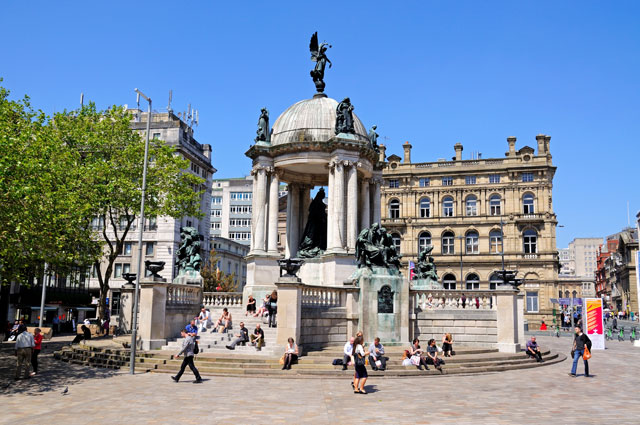
While it no longer exists, Liverpool was once home to a castle. It was built in 1237, but demolished in 1726 to make way for St. George’s Church, which was also later demolished in 1897. In 1906, the city installed the Victoria Monument as a dedication to Queen Victoria in its place, which you can find at Derby Square.
University of Liverpool

source: www.liverpool-city-group.com

source: www.huffingtonpost.co.uk
Founded as a college in 1881, the University of Liverpool gained its royal charter in 1903, giving them the ability to award degrees. It is also known to be one of the six original red brick civic universities.
Over 100 years later, there are now three universities in Liverpool: Liverpool Hope University, Liverpool John Moores University and the University of Liverpool. The pictures above show the University in 1900, compared to how it looks today.
Anfield Stadium

source: www.thisisanfield.com

This may come as a surprise to some but Anfield, the famous home of Liverpool Football Club, was originally occupied by local rivals Everton – a fact that still causes much bitterness between the two Premier League clubs. The Blues moved out after a dispute over rent in 1891 , making way for the newly formed Reds.
The ground has certainly seen some changes, most recent of all the current construction on the main stand, which is set to add around 8,500 extra seats to its current 45,522 capacity.
Goodison Park

source: www.evertonfc.com

After moving out of Anfield, Everton Football Club needed a new home. Goodison Park, or ‘the grand old lady’ as it’s sometimes referred to, was then built in 1892. The stadium is less than a mile away from Anfield, only separated by Stanley Park. The two Premier League clubs have built up a fierce rivalry over the years in a city that lives and breathes football.
Liverpool Cathedral

source: www.chesterwalls.info
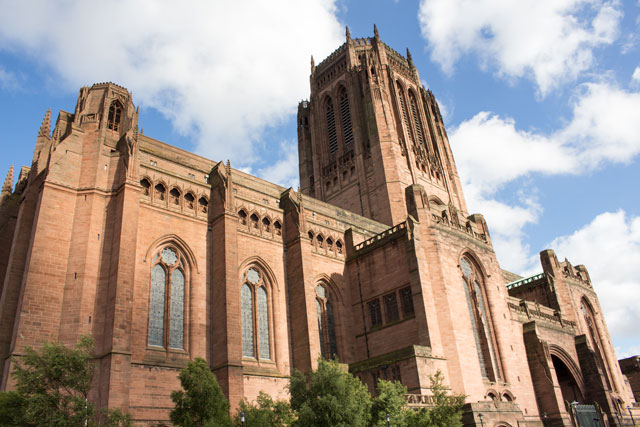
Opening in 1978, Liverpool Cathedral took a staggering 74 years to build. Its architect, Sir Giles Gilbert Scott, did not live to see the final product after he died in 1960. The two pictures show the difference between the cathedral two years into construction in 1906, and how it stands today in 2016.
The Royal Liver Building

source: www.pastframe.co.uk

The Royal Liver Building is one of Liverpool’s most iconic landmarks. The images above show the building under early construction in 1908, compared with how it looks in 2016, over 100 years since its completion. Two liver birds sit at the top of each tower, and legend has it that if these two birds were to fly away, the city would cease to exist.
Liverpool Airport

source: www.liverpoolairport.com
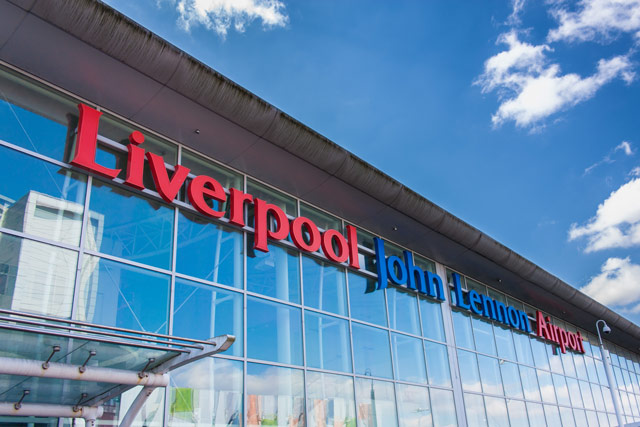
The airport was originally known as Liverpool Speke Airport, after it was built in part of the grounds of Speke Hill in 1933. In 2001, it was renamed to Liverpool John Lennon Airport, which was the first airport in the UK to be named after an individual.
The Mersey Tunnels

source: blog.liverpoolmuseums.org.uk

source: www.browzer.co.uk
The famous ferry isn’t the only way of crossing the Mersey; there are now three underground tunnels connecting Liverpool to the Wirral. The first of which is the Mersey Railway Tunnel, which was built in 1886. Despite entering bankruptcy in 1900, the tunnel is still in use today. In 1934, King George V and Queen Mary opened the Queensway Tunnel (both pictured above), or the Birkenhead tunnel as it has become known. It wasn’t until 1971 that the Kingsway Tunnel opened, connecting Liverpool and Wallasey.
The May Blitz

source: en.wikipedia.org

Merseyside received a total of eighty air-raids throughout the Second World War, most heavy of all in May 1941. Thousands were killed and even more were left homeless in a series of devastating attacks on the city. The images above show County Road in Walton following one of the May Blitz attacks, compared with how it looks in the 21st century.
Merseybeat and Beatlemania

source: www.amazon.com

When talking about Liverpool, it’s hard not to mention The Beatles, who formed under the name in 1960 before they went on to take over the world. The Fab Four, as they became known, soon rose to be one of the most famous and successful bands the world has ever seen, whilst also inspiring the city through music. Since The Beatles, Liverpool has produced a number of talented musicians and there is even The Beatles Story museum at the Albert Dock.
Liverpool Metropolitan Cathedral

source: www.alamy.com

Unlike the city’s other cathedral, this one didn’t take 74 years to build. Construction began in 1962 and it was completed five years later. Often referred to as ‘Paddy’s Wigwam’, the cathedral also hosts exams for students at the University of Liverpool. However, to appreciate the true beauty of the building, we recommend taking a step inside to experience the breathtaking interior.
Regeneration of the Albert Dock

source: www.redandwhitekop.com
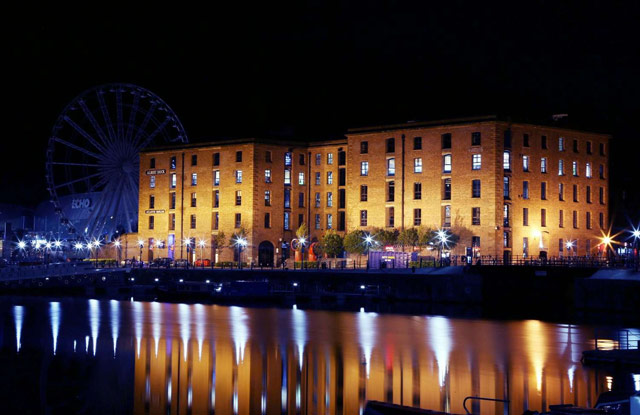
Opening in 1846, the Albert Dock served as a warehouse, storing items such as brandy, cotton, tea and silk. However, it was severely damaged by air-raids in the Second World War, and closed in 1972. Redevelopment of the dock began in 1981 and it was finally reopened in 1984. Today it is a major tourist attraction and features a number of offices, bars, restaurants and museums.
Chinatown

source: www.futureliverpool.com

Liverpool Chinatown is the first Chinatown to have been established in Europe, and is today home to approximately 10,000 Chinese residents. The city’s first Chinatown existed in the docklands; however, after heavy bombing in the Second World War, it was relocated to its current location, just West of Liverpool Cathedral. The area has received much regeneration over the years, and in 2000 the famous Chinese Arch was assembled.
It was recently announced Liverpool Chinatown will receive a £200 million development, thanks to North Point Global (China Town Developments Limited). The development has been coined ‘New Chinatown’, as it hopes to re-establish a resident Chinese population within the area.
Lime Street Station
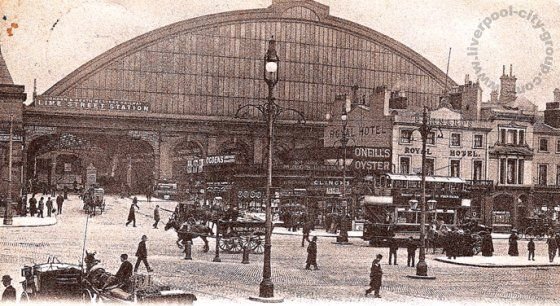
source: www.liverpool-city-group.com
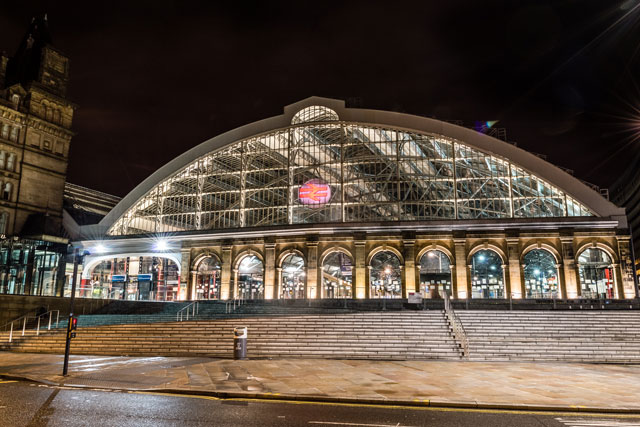
Liverpool Lime Street was opened in 1836. A high-rise tower block called Concourse House was built in the 1960’s to the right of the station; however, it became so run down that it was demolished in 2009. Four years later, Lime Street Station benefited from refurbishment as part of a £40 million investment from Network Rail.
30 James Street

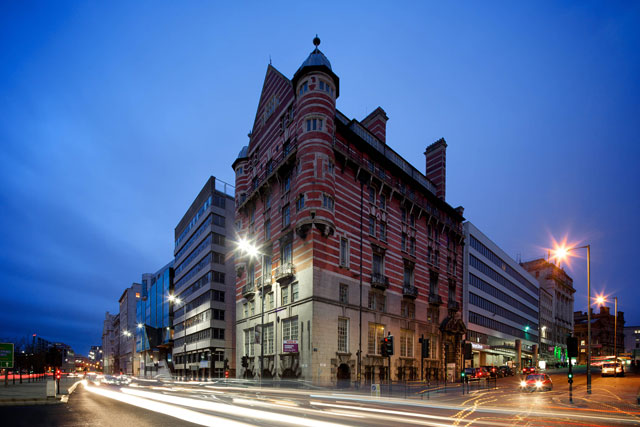
30 James Street is one of the most intriguing buildings in Liverpool. Formerly known as Albion House, the beautiful building served as the headquarters to the shipping company The White Star Line, and so was RMS Titanic’s port of registry. 30 James Street is the very reason why the ill-fated liner became synonymous with the city of Liverpool.
It therefore seemed only apt for hotel owners Lawrence and Katie Kenwright to create a Titanic themed hotel, which commemorated the sunken vessel, the building’s history and the White Star Line. 30 James Street – Home of the Titanic opened its doors in April 2014, and offers luxurious accommodation that allows the public to explore the building’s exquisite architecture whilst enjoying a stay in the city centre.



